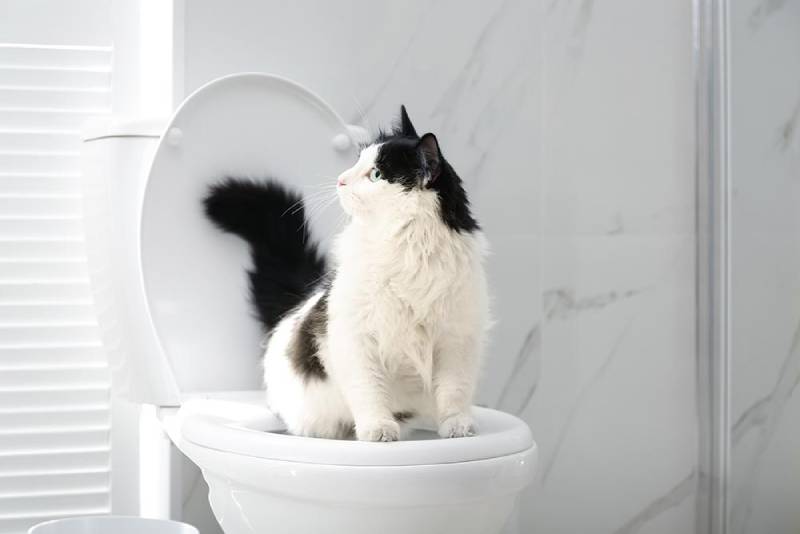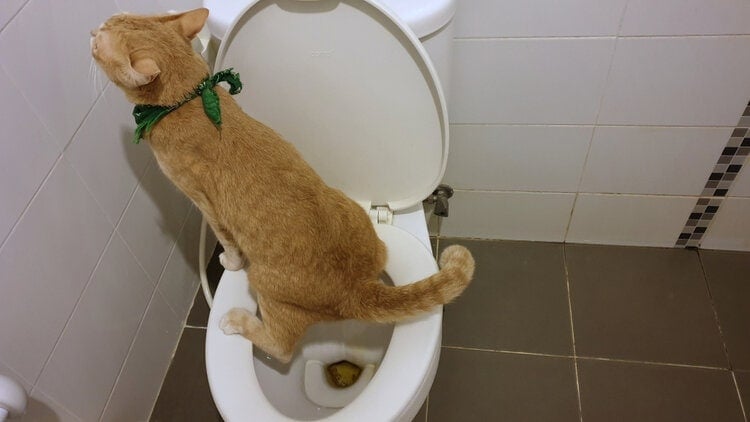Why Flushing Cat Poop Down Your Toilet Isn't a Good Idea - Tips for Proper Handling
Why Flushing Cat Poop Down Your Toilet Isn't a Good Idea - Tips for Proper Handling
Blog Article
In this article down the page you can discover more dependable insights around Don’t flush cat feces down the toilet.

Intro
As pet cat proprietors, it's important to bear in mind just how we deal with our feline pals' waste. While it might appear convenient to flush feline poop down the bathroom, this technique can have destructive repercussions for both the environment and human health and wellness.
Environmental Impact
Flushing cat poop introduces hazardous pathogens and bloodsuckers right into the water system, positioning a significant threat to marine environments. These pollutants can adversely affect marine life and concession water high quality.
Wellness Risks
In addition to environmental worries, flushing feline waste can also present health dangers to humans. Feline feces might include Toxoplasma gondii, a bloodsucker that can cause toxoplasmosis-- a potentially extreme illness, especially for expectant women and individuals with damaged body immune systems.
Alternatives to Flushing
Fortunately, there are much safer and a lot more liable means to deal with feline poop. Think about the following choices:
1. Scoop and Dispose in Trash
One of the most common approach of taking care of feline poop is to scoop it into an eco-friendly bag and throw it in the garbage. Make sure to use a specialized litter inside story and deal with the waste without delay.
2. Use Biodegradable Litter
Go with naturally degradable pet cat litter made from products such as corn or wheat. These clutters are environmentally friendly and can be securely disposed of in the trash.
3. Hide in the Yard
If you have a yard, think about hiding pet cat waste in a designated area away from veggie yards and water resources. Be sure to dig deep sufficient to avoid contamination of groundwater.
4. Set Up a Pet Waste Disposal System
Purchase a family pet waste disposal system specifically designed for feline waste. These systems utilize enzymes to break down the waste, minimizing smell and ecological effect.
Final thought
Accountable family pet ownership prolongs beyond providing food and shelter-- it additionally entails appropriate waste administration. By refraining from flushing pet cat poop down the bathroom and choosing alternative disposal approaches, we can decrease our environmental footprint and shield human health and wellness.
Why You Should NEVER Flush Cat Poop (and/or Litter) Down Your Toilet
The Problem with Litter
The main function of litter is to solidify and adhere to your cat’s waste. While this makes litter excellent for collecting cat poop and urine, it’s also the exact property that makes it a nightmare when flushed down the toilet.
Cat litter can and will clog pipes. There is non-clumping litter, but it’s still quite heavy and can build up in pipes. This is true even of supposed “flushable litter.”
The problems only compound when the litter is already clumped into cat waste. Toilet paper is among the more flushable things, and even too much of that will clog a toilet.
The Problem with Cat Poop
Sewers and septic systems are designed with human waste in mind. The microbes that help break down human waste don’t work on cat waste. Additionally, cat poop plays host to the parasite Toxoplasma gondii.
When flushed, this parasite can enter the environment in places it was never meant to, posing a risk to pregnant women, their unborn children, and other people with compromised immune systems. While it might not seem possible, flushing cat poop can indeed introduce this parasite to the public water supply.
These reasons are why, even if you’ve trained your cat to go on the toilet and flush, which is possible, it’s still not a good idea. Also, pregnant women and the immunocompromised shouldn’t change litter, either.
How to Handle Litter
The best way to handle litter is to simply put it in a plastic bag and place it in the trash. Avoiding environmental risks and possible plumbing damage is worth the extra effort.
You can also invest in devices that seal away your cat’s waste in a separate compartment, so you don’t have to change the litter nearly as often. They’re also safer for pet owners because they limit the possibility of Toxoplasma gondii exposure.
Disposing of litter the old-fashioned way will ensure you won’t have to worry about any issues that flushing the waste can potentially cause.
Take Care of Clogged Pipes with Stephens Plumbing, Heating & Air Conditioning
The reasons you should never flush cat poop down your toilet are numerous, but sometimes the inevitable happens despite your best efforts.
Stephens Plumbing, Heating & Air Conditioning is ready to help if you’re experiencing litter-blocked plumbing. Whether you need us in an emergency or want to schedule regular maintenance, we’re here for you.
https://www.stephensplumbing.net/bathroom-plumbing/never-flush-cat-poop-down-your-toilet/

As a serious reader about Can You Flush Cat Poop Down The Toilet?, I thought sharing that excerpt was really helpful. So long as you enjoyed reading our blog post kindly do not forget to pass it around. Many thanks for taking the time to read it.
Call Today Report this page